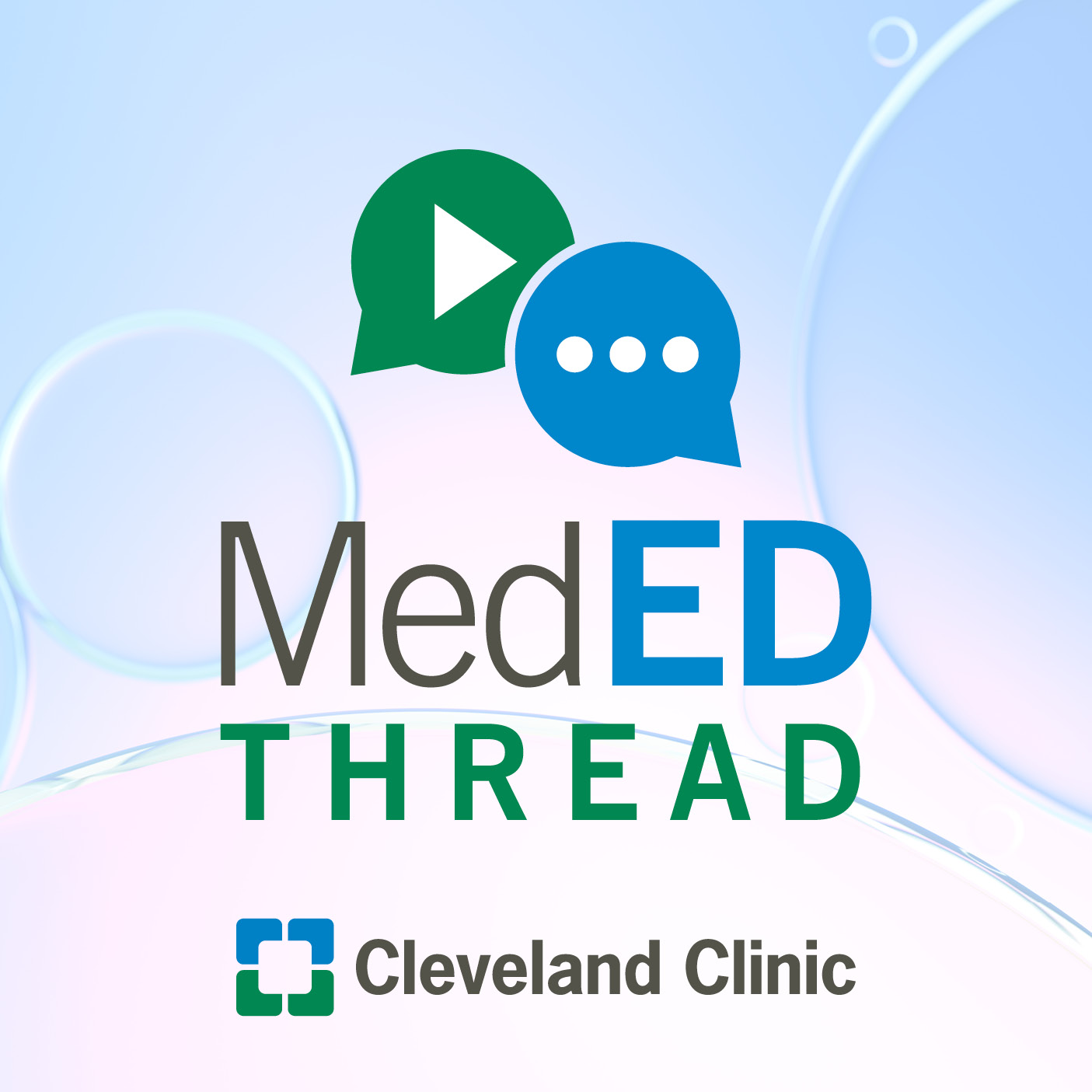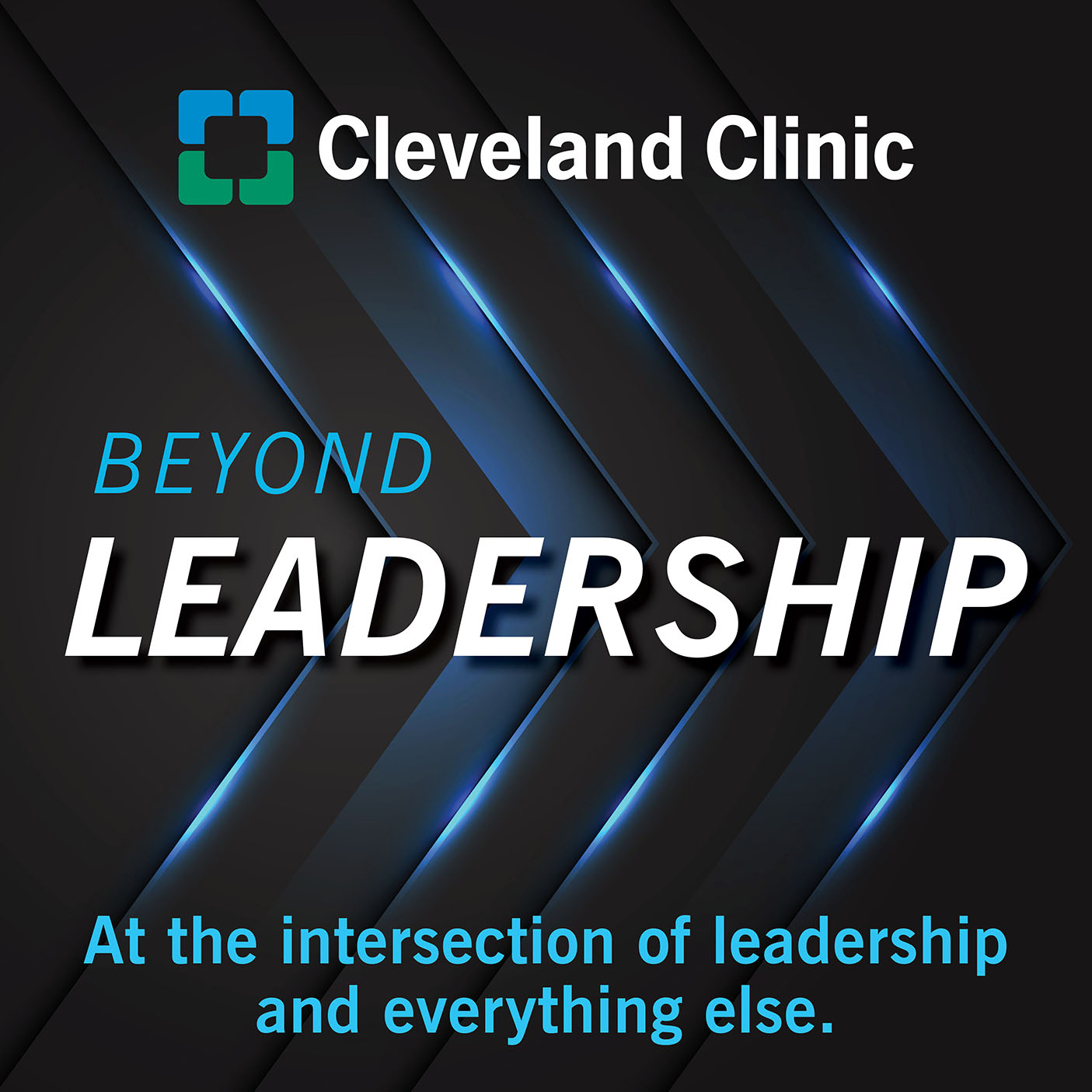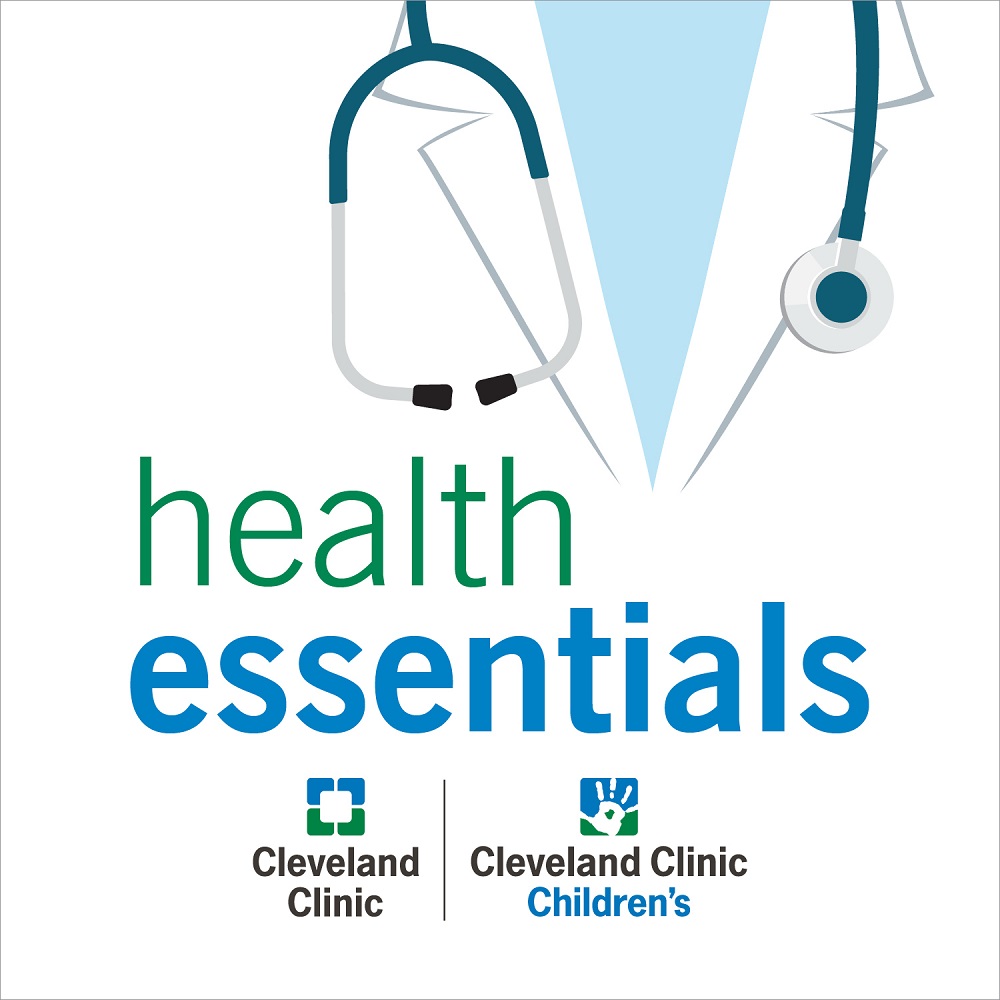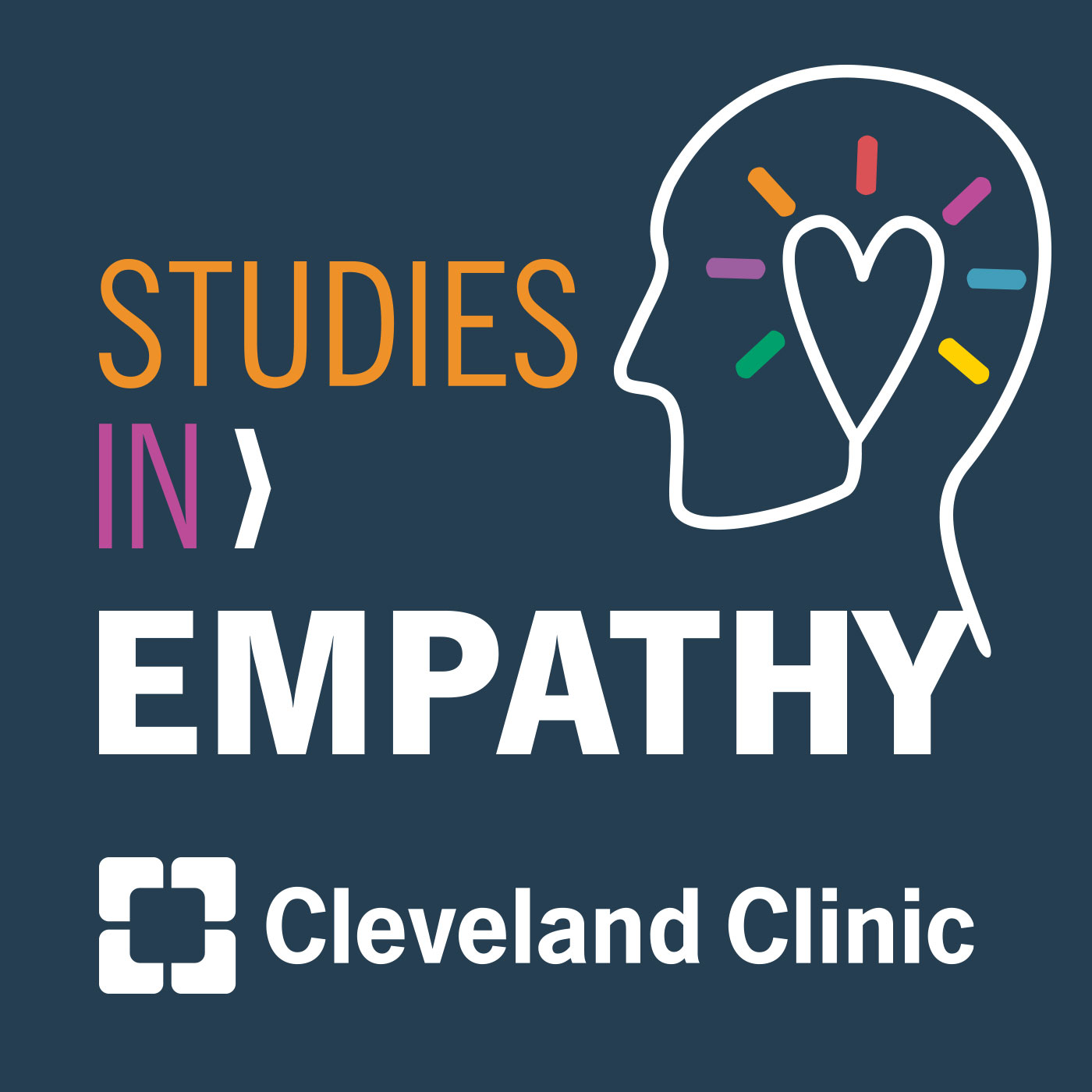Learning Without Limits: Tackling RSV and Vaccine Hesitancy Through Education
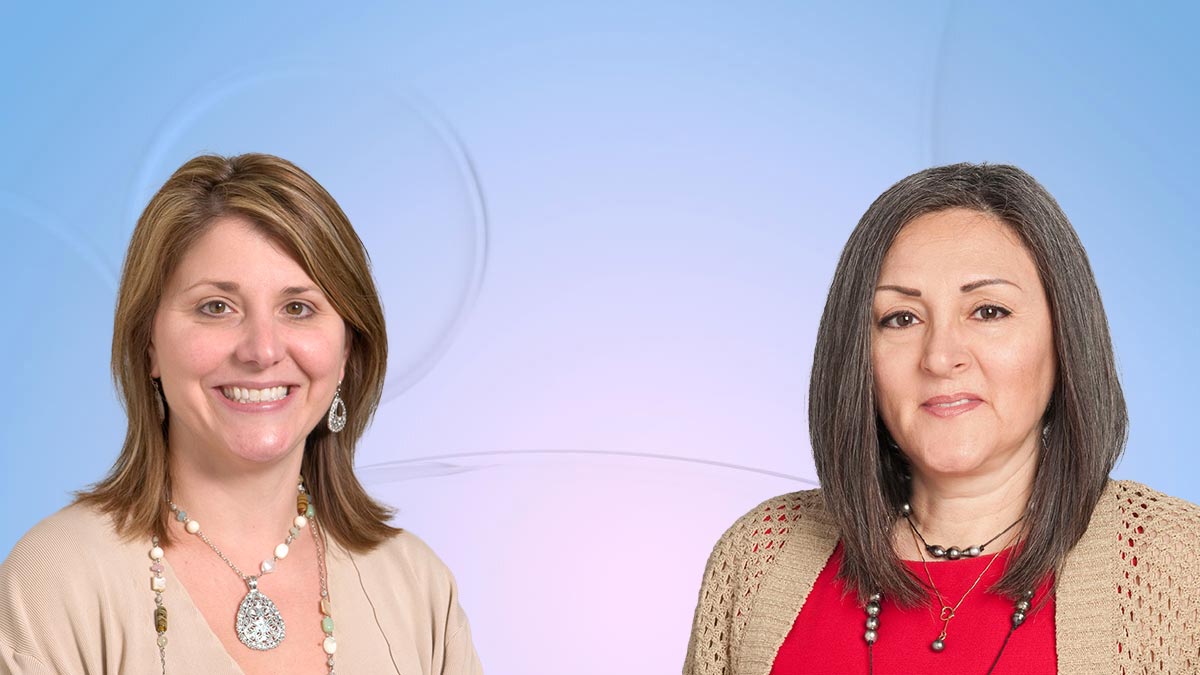
In this episode of MedEd Thread, we talk with Dr. Cecile Foshee, Director of the Office of Interprofessional Learning, and Ronna Romano, Senior Project Manager in Education at Cleveland Clinic, who share how a national educational initiative is helping healthcare professionals better understand and address the impact of RSV (respiratory syncytial virus) and vaccine hesitancy. Dr. Foshee and Ronna discuss the development of differentiated learning pathways designed to meet the many different needs of providers across the country—from rural hospitals to major academic centers. They explore how microlearning, modular content, and cognitive science principles were used to create flexible, engaging educational experiences. Tune in to learn how this innovative approach is empowering clinicians, combating misinformation, and promoting more informed, responsive care for vulnerable populations.
Subscribe: Apple Podcasts | Podcast Addict | Spotify | Buzzsprout
Learning Without Limits: Tackling RSV and Vaccine Hesitancy Through Education
Podcast Transcript
James K. Stoller:
Hello and welcome to MedEd Thread, a Cleveland Clinic education podcast that explores the latest innovations in medical education and amplifies the tremendous work of our educators across the enterprise.
Dr. Tony Tizzano:
Hello. Welcome to today's episode of MedEd Thread, an education podcast exploring an innovative educational initiative to address the learning needs of a wide range of audiences across the country. I'm your host, Dr. Tony Tizzano, director of Student and Learner Health here at Cleveland Clinic in Cleveland, Ohio.
Today I'm very pleased to have Dr. Cecile Foshee, director of the Office of Interprofessional Learning at Cleveland Clinic and Ronna Romano, senior project manager in Education's office of Interprofessional Learning at Cleveland Clinic.
Cecile and Ronna, welcome to today's podcast.
Dr. Cecile Foshee:
Thank you.
Dr. Tony Tizzano:
To get us started, please tell us a little bit about yourselves, your educational backgrounds, what brought you to Cleveland, and your roles here at Cleveland Clinic.
Cecile, get us started please.
Dr. Cecile Foshee:
Sure. So my undergrad was in media arts and 3D animation. A lot of people don't know that about me. Uh, I have a Master's in Education, a PhD in Educational Technology. I completed a medical education fellowship here at Cleveland Clinic, which is what brought me here. And I've had experience in the education field for 24 years. 12 of those have been here at Cleveland.
So the one thing that actually keeps me here, I have all these roles. You know, I direct the different programs and things, but I think the one thing across the board is always educating those who serve. And that has been, you know, I remember when I first talked to Dr. Stoller, it's like that was kind of one of the passions that I had. I wanted to actually work with people that are in the service of others. And so that's what keeps me here. Even though my kids are in Arizona and Hawaii, I could be in nice, warmer places, but here I am in Cleveland
Dr. Tony Tizzano:
And we're happy to have you.
Dr. Cecile Foshee:
(laughs).
Dr. Tony Tizzano:
And I have to tell you, from having gotten to know you, you bring this to the level of an art and a science.
Dr. Cecile Foshee:
Thank you.
Dr. Tony Tizzano:
So we are very grateful for that.
Ronna, what about you?
Ronna Romano:
Yes, so my undergrad is in marketing and I have a Master's in Business Administration, and I've been at the clinic for almost 25 years. So, and my whole career has been in education. I was with the Center for Continuing Education for 19 years. I manage projects live and during online, and then I transitioned over to the Office of Interprofessional Learning about five years ago.
Dr. Tony Tizzano:
Perfect. Well, welcome.
In today's segment, we will explore an innovative approach to effectively educating any and all healthcare professionals about the impact of RSV infections and vaccine hesitancy to prevent infection, reduce illness, and combat misinformation. So along those lines, Cecile, could you help frame today's topic by providing our listeners with some context around the impact of RSV infection and vaccine hesitation?
Dr. Cecile Foshee:
Of course. Just o- one step back, one of the- the areas that we're going to focus on today is the educational aspect of this initiative. Many of them are on our eye... are they... yeah, our clinicians. So we relied on the experts that we work with to identify the gaps that we were addressing, kind of guide the direction of the project.
The biggest thing was we wanted to improve providers knowledge about the efficacy of RSV in terms of the vaccination. And through that education, contribute to the reduction of the RSV infection in infants and older adults. And then also address some of the components or aspects that contribute to the vaccine hesitancy. So we are not going to talk about the RSV itself, but how we went about designing that information and presented it to this broad range of providers.
Dr. Tony Tizzano:
Perfect. So with that in mind, you talk about differentiated learning pathways. What was the impetus for their development and what exactly are they?
Dr. Cecile Foshee:
So to frame that, we need to understand what we were trying to do, right? So we have providers across the nation. So we needed to design content for a wide range of whether it was nurses, physicians, you know, nurse practitioners, different backgrounds, different levels of expertise, different practice settings. So that's all we knew, right? So we didn't know what their specific needs were, but we knew that our materials needed to be relevant to all of them. You know, what does a provider in a rural hospital need versus a pharmacist in an overlooked population or a physician at Cleveland Clinic?
We did not know that. So what we wanted to design was something that was flexible, that was modular, that people could individualize to their own learning needs. And that's exactly what a differentiated learning pathway is, is putting the learner in the driver's seat, letting them select what is most relevant to them, what is going to be the one thing that is going to be most meaningful. So that's really where, where that came from. And then from that, when we decided, okay, this is going to be modular, this is what we're gonna design, then we thought about, okay, what would be the types of learning we want to target? So we really focused on formal learning, informal learning, on-demand learning, and then we used a variety of modalities and delivery strategies. And I think people may not understand the difference between those two.
So a modality, if you can think of if you're going to have a meal at home versus at a restaurant, right? So that's the modality. And the delivery strategy would be like the structure itself. Are you going to have a full meal or a snack, right? So that's really the difference. And so thinking about those types of learning, the modalities and how we're going to deliver it is how we structure this pathway. So there were really, in the formal learning, we had things that are like structured content, learning objectives, opportunities for practice, assessments. So that's the formal... Everybody understands formal learning. You go to a classroom, you have all these objectives.
Informal learning is a little bit less known, but it's really what we do every day, right? Anytime you go on a website and you look for something that is, you know, you don't have a learning objective per se, you have some interest to learn about something. So that was the other type of learning we were targeting. And then the on-demand typically is when you want to solve a problem in the moment, right? You need something right now.
So when we looked at all of the different assets that we created, they kind of fall into those categories. So you're thinking about the informal learning was print and online articles, right? You can think of an article, you can read one, or you can read eight, or you can... or you can read none. Do you have podcasts, webcasts, clinical decisions, which were, you know, authentic patient cases. We had in the formal learning, the one-hour... the one-hour online courses, or 15 to 20 minute little short modules, which are actually called snippets. And then we had micro learnings. That's like the on-demand piece. And then we also have what some people think about as sometimes on-demand, just-in-time learning is the toolkit. We had a whole bunch of curated resources, things that people could rely on. These are reputable things I can go look into, infographics. In fact, some of those have been embedded in EPIC at our institution where they can be attached to a patient summary.
So all of these things just kind of allow you as the user to say, okay, which of these things? How much time do I have? I have 10 minutes, maybe I can look at this one little snippet, or listen to a podcast, or things of that sort. So that was really the design behind those pathways.
Dr. Tony Tizzano:
So more or less, you're, you're matching the needs or th- the way in which different people are differently. I prefer this, someone prefers that.
Dr. Cecile Foshee:
Yeah. And more than anything, it's like, how much do you need, right? What is your level of expertise? Because you could have a nurse who is brand new and maybe hasn't really seen that many cases with RSV, and then you have somebody who's embedded in it. So what they need to look at is entirely different as to what a person that doesn't have any experience needs to look like. So that was really the modular design was to address that, the fact that we didn't know who we were talking to.
Dr. Tony Tizzano:
You know, among the many educational platforms you mentioned, you mentioned micro learning.
Dr. Cecile Foshee:
Yes.
Dr. Tony Tizzano:
What exactly is that and what part did it play?
Dr. Cecile Foshee:
So the micro learnings are basically one to three minute videos. We can think of a public service announcement, right? They're meant to just motivate people and give you just a taste of what it is that you are, you know, promoting. In this case, we used them for the vaccine hesitancy. So we did a lot of different interviews. We had people go... talk about what are the fears, what are the barriers that get in the way, what are the common things that people worry about. They were very well done, very interesting. And Deb Kangisser was a key player in that, actually.
Dr. Tony Tizzano:
Yeah, I can really see the value of that sort of format. So what were some of the considerations that went into defining these pathways in terms of cognitive load and so on and so forth?
Dr. Cecile Foshee:
Yeah, and that's a... that's a great question because any time that you are designing content for... to be consumed online, you have to really think about, first of all, cognitive science. What do we know about how people learn, right? So we understand that people build on their prior knowledge in order to learn. That was their biggest barrier, right? We didn't know what their prior knowledge was so we decided, okay, that modular approach would be great. But then we also think about what might be the motivation for them to learn, right? What are the things that they need to do to engage with this content?
So we kind of pulled a little bit on like that social and emotional aspect of learning. We emphasized RSV, really why is it important? How does it impact i- infants and older adults? The cases brought that to life so people then connect to that. The appeal to their sense of responsibility with the vaccine hesitancy, right? Thinking about, what is your role in addressing some of that problem? So that was that piece that addresses that cognitive science component of the content. And then you get into that cognitive load, which is how you present the information to people.
And so, you know, if- if you think about the dual-coding theory where you have visual and auditory channels, right? So the- the premise is that we process information using both channels. And so whenever those channels compete with one another, you interfere with that learning. So the way you actually design content is incredibly important. We always dismiss it as, oh, I'm doing a PowerPoint, I'm just putting this thing together. And that's like the last thing you think about. And in reality, it's the one thing that the students or the learners see first. So you can either get in the way of their learning or you can enhance it.
So anytime you're using text and images, you know, there's a tendency to just put a picture there just because you want to, right? But when you're using both of them, they need to complement each other. They need to en- enhance what it is that you're looking at. And you know, we had to go through and kind of clean up some of those slides and some of the things that we got from our faculty because it didn't align to those guidelines that really help people learn. So if I were to say something to the learners, if you're designing something, you know, avoid unnecessary stuff. You know, just include what is the must have information, what do they need to know to walk away with what you want them to learn? And make sure that your visuals truly support what you're saying, that they're not repeating it, that they're really not getting in the way.
Dr. Tony Tizzano:
Yeah, I've heard you make that point before. It has changed the way I look at PowerPoint, because so often, you know, you're pointing this flashy, things are spinning in, fading out, and there are so many things you can do, you get caught up in it. And what you really are trying to do is convey information, and that's where that kind of science of how do we convey information best to get the best bang for our buck in retention.
Dr. Cecile Foshee:
Absolutely. And like I said, I think there's a tendency to dismiss it as a minor, you know, secondary priority. And you know, you can tell I'm very passionate about that. And-
Dr. Tony Tizzano:
Yes.
Dr. Cecile Foshee:
... it's one of those things that I just can't get tired of emphasizing
Dr. Tony Tizzano:
Less is more at times.
So Ronna, you know, what is your role in the development as project manager?
Ronna Romano:
So as a project manager, you really are the support person. Every piece of the project, you're involved with. It could be the faculty management. You're working with the faculty mana... Make sure they have the details they need to know what the ask is, including the CE requirements to meet their standards, their compliance.
With the articles, how many words do the abstract have? How many words do the article have? What reference format, deadlines, capture dates? All that material is very important to communicate with the faculty member and also to make sure that you send friendly reminders so they stay on task so you meet the project deadline. You have the production piece, finding the vendors to do online cases or the micro learnings.
We're lucky here that we have in-house capabilities and have a great team in education to support with the development of these educational materials. Bethany from the Center for Continuing Education, she was a huge help in developing the webcasts and the clinical decisions.
Shared services, Mary Grace, helped with the podcast, and we work closely with marketing to develop these podcasts that are hosted on respiratory exchange. And also the Cleveland Clinic Journal of Medicine, Mary, played a role in managing every aspect of the journal. We collected the articles, she sent it to editing, the peer reviewed, the production piece, every piece she was involved with. So really without the support of other team members within education, we could not have produced this RSV program.
In addition, you have the marketing aspect of things. You have to have a marketing plan, you have to meet the branding guidelines that the clinic has, and you have to execute it. So that was a huge piece. I mean, currently we- we have over 20 emails that we sent out already for this project. We have two postcard mailings. So we have a wide variety of marketing that we're doing with the project and that we're managing. And then you also have the accreditation compliance issues you have to make sure that you meet. They required a peer review. So we had to make every single activity went through a peer review. Every single activity went through an editing process.
So you have all these layers of complexity in the project that people just don't think that, oh, it's up there, it's done. But they're really the project managers that manage teams along with their team members or coordinators. There really are multiple steps that goes into any type of program, no- no matter if it's hour long or if it's three days long for a live activity. All the same requirements are involved with every single piece.
Dr. Tony Tizzano:
You know, when it came to providing faculty with instruction, I mean, I would think that if you're not used to doing these kinds of programs, that entails a certain level of difficulty or need. What was that like? How did you go about pulling that together?
Ronna Romano:
So some of the asks were simple, the podcasts, the webcasts, content experts, they do these presentations on a regular basis and are expert at doing it. What was a little bit more challenging is that interactive snippets. So that was a little bit more challenging. I think Cecile can probably answer more to it, because that was one of the challenges that we're going to outline how originally we provided instructions utilizing a template that Dr. Foshee uses for her students and it didn't translate well in this setting at all. So I don't know if you want to add to that a little bit.
Dr. Tony Tizzano:
Please.
Dr. Cecile Foshee:
So, absolutely. So there is this template that we have. So a snippet is supposed to be 15 minutes or under, you know, 20 minutes tops. But it has to include some sort of an activity. So it's not just somebody talking at you, but something where you can actually practice and internalize that information. So the template that I have is for somebody is what we use in the master's program is for somebody to actually take that template and develop their own snippet. But what we were doing here is we were going to develop the snippet for them. We just wanted their content.
And so what ended up happening is they either gave us not enough, or it just a little bit irrelevant. And so it- it was a little bit of a hot mess because... Not because we didn't give the sufficient instructions, because I think the- the instructions were clear, it was they really needed a what to do and what not to do example almost. And we probably should not have used the template because it led them to think that they were supposed to populate it as a... as if they were producing it. And that just kind of created more work for us.
Dr. Tony Tizzano:
So you, in essence, took what they had to say and articulated it in a way that would be better digestible. Yeah. You know, that's where that science part of this comes in, and I think it's, you know, fascinating.
So for either of you, Ronna or Cecile, how does one go about measuring the success of this kind of work? And did the project, as you looked at it, towards the end, were you... were you moving the needle in the direction you wanted to?
Dr. Cecile Foshee:
Uh, that is a very... a very tough question because it's education, right? And there's limits to what education can do. You can improve knowledge, absolutely. And I'm certain that people that went through now know more about it than they did before. We have superficial measures, you know, number of clicks, pages viewed, number of articles disseminated. But that does not show the impact of this intervention on actual practice.
And I think that it tends to be a big ask of education because we can share what we know or what our experts know with a wide population, and they probably can internalize it and some of them may even change their practice, but there are so many other variables that are outside of our control, whether it's some expert in their own setting or something else that they saw. We have no way of attributing that outcome to what we're doing. But I think Ronna has some numbers in terms of like how many people have accessed it (laughs).
Ronna Romano:
Yeah, so a big measurement that we use here in education is learning encounters, meaning that the number of people that actually completed the activity. So in order to attract a large range of learners, you need to really have a large reach. And through the marketing efforts of producing a postcard, the emails. You even advertise in the Cleveland Clinic Journal of Medicine, we had a polybag insert on a journal where you, like, they mail it out and it's a postcard insert. So through that, I mean, we reached over 2.5 million learners thus far. And since last quarter, December of 2024, we had over 52,000 learning encounters and 5,000 CE certificates that were issued.
Dr. Tony Tizzano:
That is fabulous.
Ronna Romano:
Right.
Dr. Tony Tizzano:
So as both of you reflect on what you've accomplished and what you've done, and I'm- I'm sure there's more to come on this, you know, what were the lessons learned and what advice would you give to others who were trying to pursue a similar sort of endeavor?
Dr. Cecile Foshee:
Well, looking back, when we look at the whole design, on the surface, it was a simple thing, right? So you meet people where they are, you give them what they need, and you help them apply it. Now, implementing is a different story, right? So we tapped into the- the expertise of 45 different content experts, which kind of generated an entire logistical nightmare for Ronna, which she owned and carried through.
You know, we made a lot of assumptions about even vendors, right? We had a vendor in mind that was, you know, someone that I have worked with closely and is an amazing producer, and can take something and turn it into an- an amazing output, then she became unavailable. And so we had to go with someone else. And I made the assumption that this person would do the same thing because they have the same degree. So making even, even down to those little things, right? So don't ever make any assumptions about anything. Just because you have the same letters after your name doesn't mean you have the same knowledge, right?
The other thing is the- the real true importance of having people who are passionate about the topic. We were so lucky to have Dr. Gordon and Katie Rivard, they were the drivers behind this, right? Their dedication, their drive, their support. It was just amazing. And they did it all with a smile, you know? They were just like all on board. You know, they met with us all the time. They sent out letters, they... Yeah, it- it was fabulous. So I think the message is, if you have somebody that believes in the work and is committed, you gotta hang on to them.
Dr. Tony Tizzano:
So it takes a village, but one of them has to be Ronna.
Ronna Romano:
(laughs).
Dr. Cecile Foshee:
Yes.
Dr. Tony Tizzano:
Are there any things I should have asked that our listeners would like to hear and you think I may have missed?
Dr. Cecile Foshee:
I am not sure that there's anything that you didn't ask, but I think this is an opportunity to really truly recognize Ronna, because you know, she's very humble and she did so much for this project, and she did get a lot of support, but not to the extent that it required. So everything that she did for this is really what contributed to the success and everything she does for our office.
I always say the Office of Interprofessional Learning would not exist without Ronna, and I really truly mean it. And again, that is one of the things that everybody should really learn to appreciate in our organization. We have so many passionate people that make the wheels turn.
Dr. Tony Tizzano:
Yeah.
Dr. Cecile Foshee:
And they go unrecognized.
Ronna Romano:
Thank you. Thank you. And I just... I just want to thank all the colleagues here in education, media production that support this project. Thank you. Because without them, we would not have been able to do the micro learnings, the webcasts, the podcasts, any of the pathways that we developed. And I also want to do a special shout out to Meg and Stormy who work in our office because they really helped us behind the scenes and provide additional support.
Dr. Tony Tizzano:
Yeah, it takes a village, as I said. The thing I like about education here is that the resource is vast, and it's almost like no stone is left unturned. There is expertise around every corner, and it's just learning what it is. I think that's probably the biggest hurdle, is knowing how to find all the skill sets that people have.
Dr. Cecile Foshee:
Yeah.
Dr. Tony Tizzano:
It really brings so much to the table.
Dr. Cecile Foshee:
Absolutely.
Dr. Tony Tizzano:
Well, thank you so much, Cecile and Ronna. This has been a wonderfully insightful and thought provoking episode of MedEd Thread.
To our listeners, if you'd like to suggest a medical education topic to us or comment on an episode, please email us at education@ccf.org. Thank you very much for joining us, and we look forward to seeing you on our next podcast. Have a wonderful day.
Dr. Cecile Foshee:
Thank you.
James K. Stoller:
This concludes this episode of MedEd Thread, a Cleveland Clinic education podcast. Be sure to subscribe to hear new episodes via iTunes, Google Play, Stitcher, Spotify, or wherever you get your podcasts.
Until next time. Thanks for listening to MedEd Thread and please join us again soon.
